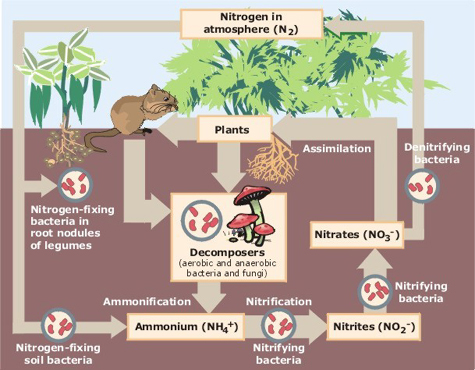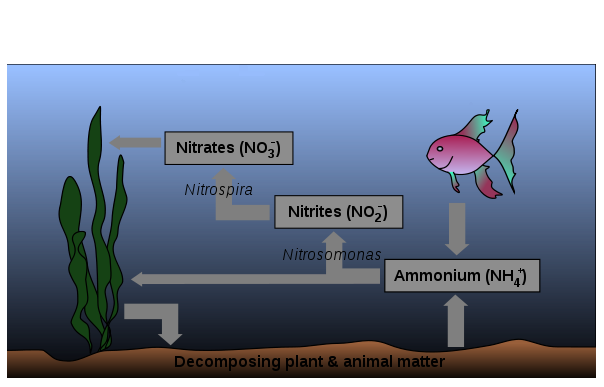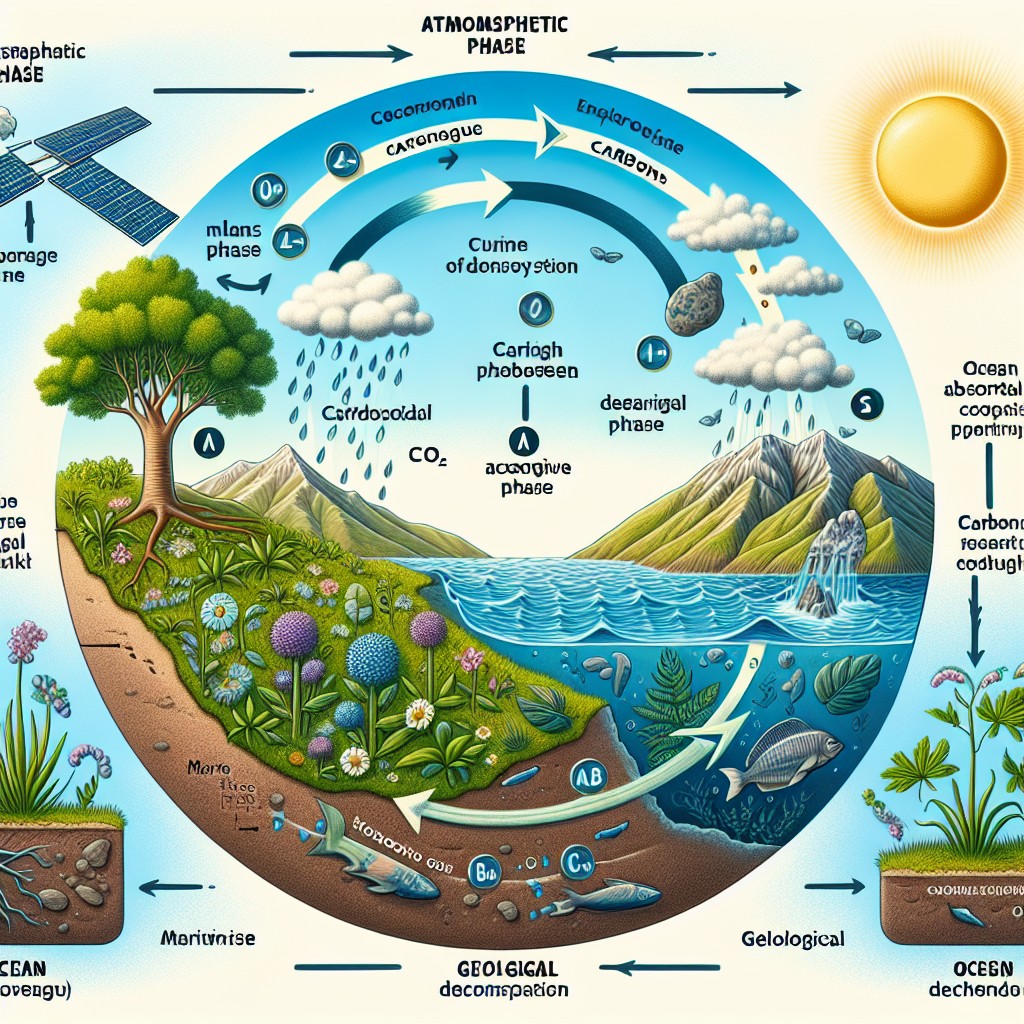The Nitrogen cycle refers to the process that recycles nitrogen on earth ensuring this important commodity remains abundant.
Nitrogen Cycle in Aquatic Life
What is the Nitrogen Cycle?
The Nitrogen cycle refers to the process that recycles nitrogen on earth ensuring this important commodity remains abundant.
For healthy growth, plants need a good supply of nutrients and the most important of these is nitrogen. If these nutrients are depleted from the soil plant life is unable to thrive so maintaining a healthy nutrient rich soil is very important for both the plants and animals that depend on them. Nature can continue to thrive via recycling these valuable nutrients through various processes. Nitrogen is recycled throughout life forms in a process known as the Nitrogen Cycle.
(Environmental Protection Agency All EPA images are in the public domain)
Nitrogen Cycle in Plants
Plants are unable to take up nitrogen in its basic form but instead they can use compounds of nitrogen such as nitrates and ammonia which are general produced by microorganisms in the soil and around the roots of legumes. The microorganism use an enzyme called Nitrogenase to convert the nitrogen into ammonia. The enzyme does not work with oxygen and so these bacteria have adapted the parts of the cells required for nitrogen fixing (conversion of nitrogen into nitrogen compounds) to ensure anaerobic conditions exist.
Nitrogen Cycle in Animals
Plants take up nitrate ions from the soil through their roots and use these nitrates to produce proteins as well as in certain plant cells. When the plants are eaten by animals the nitrogen containing proteins are broken down to produce amino acids. These amino acids are absorbed by the animals gut and turned into the proteins required for the animals’ muscles and tissues. When these animals are eaten their tissues are then broken down and rebuilt to make tissue for the consuming animal and in this way the nitrogen is passed through the food chain.
Nitrogen Cycle in Aquatic Life
Image created by Ilmari Karonen and has been submitted into the public domain.
Fish produce harmful ammonia through excreta and urine which is a highly toxic compound for fish. Bacteria in the filter called Nitrosomonas convert the ammonia into nitrites which are slightly less toxic to the fish. These nitrites are then converted by Nitrobacter (bacteria) into nitrates which are then absorbed by the plants in the tank and used for growth. When the plants or fish die nitrogen is released back into the tank through decomposition.




